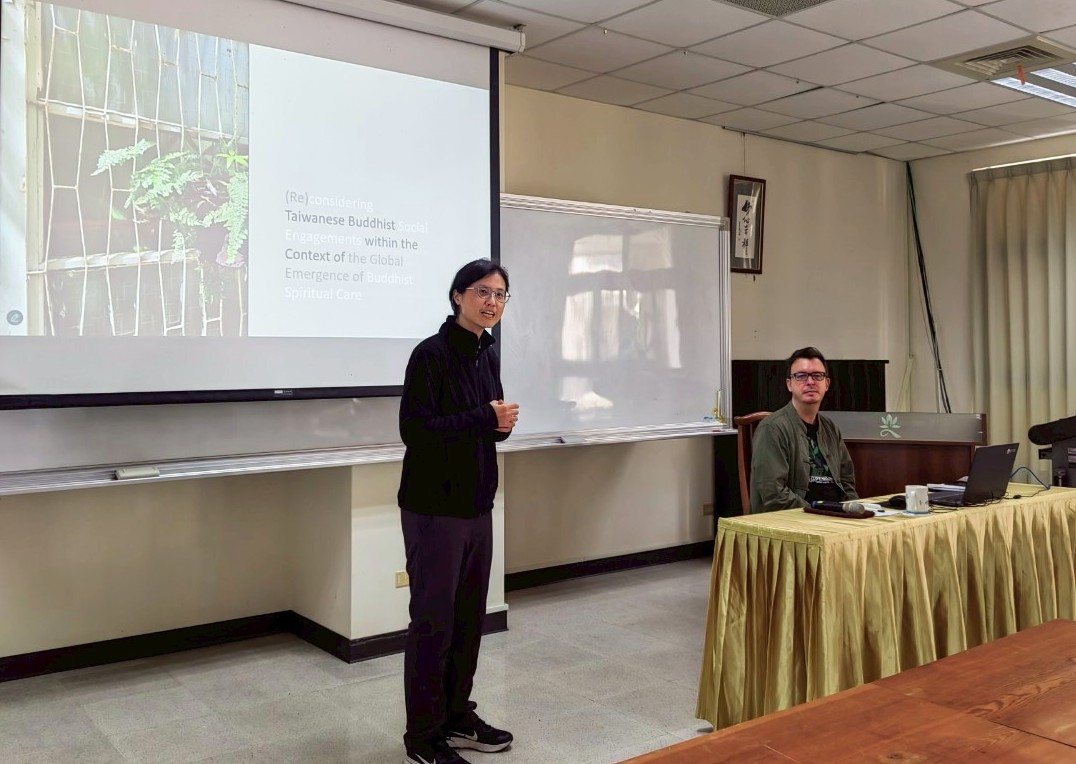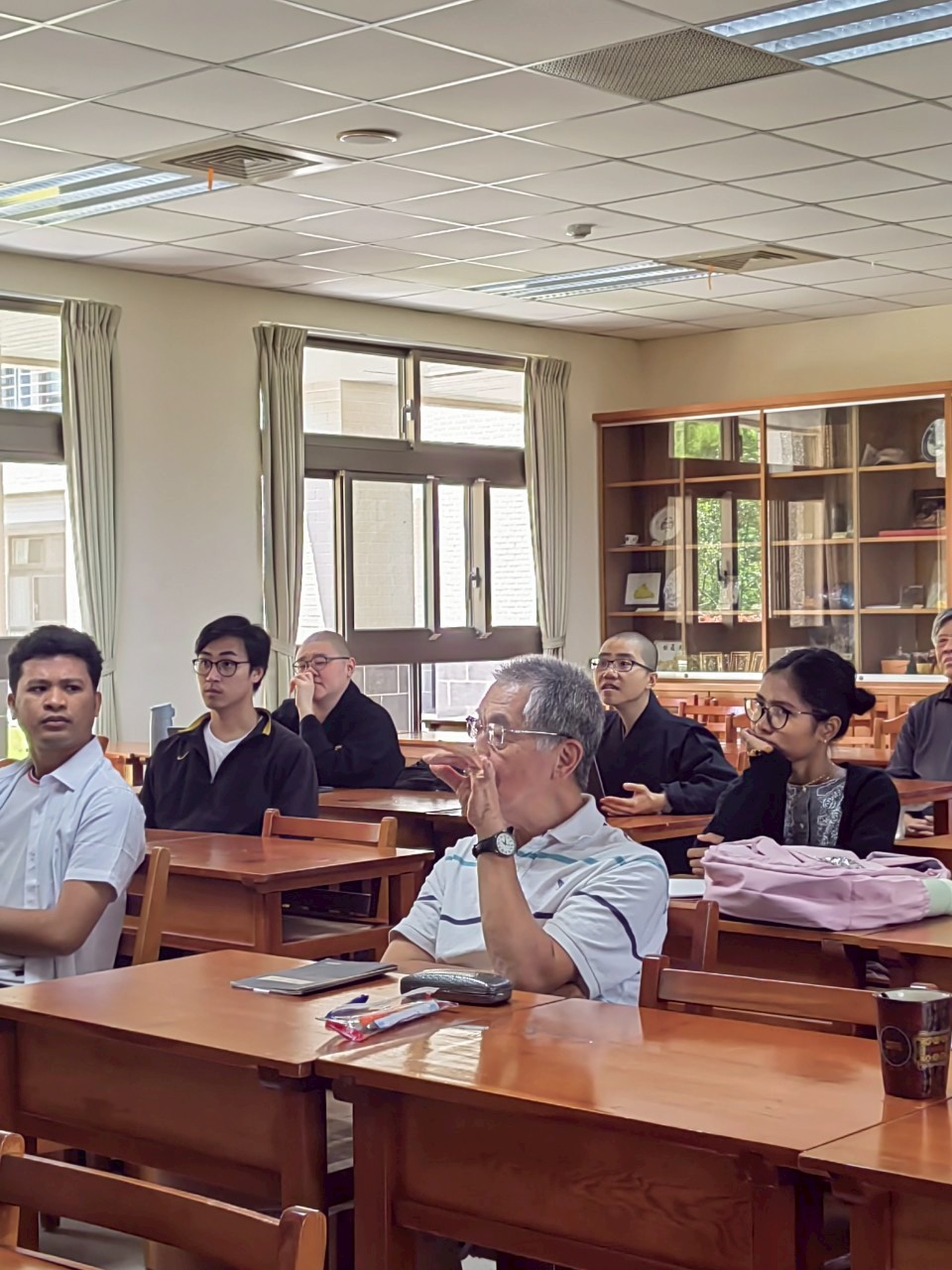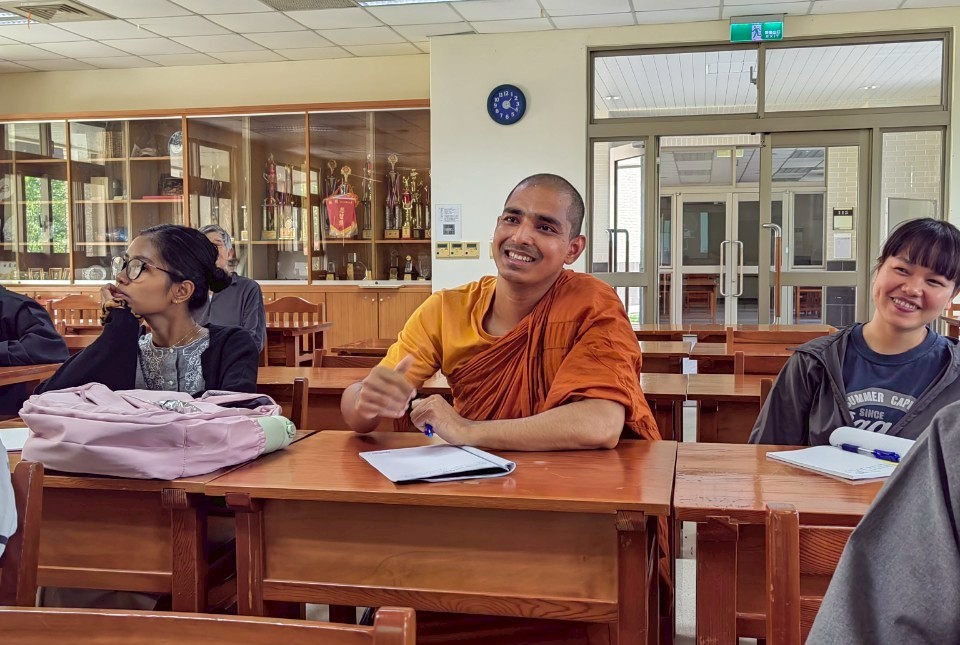In this lecture on Buddhist spiritual care in Taiwan within the context of globalization, Dr. Jens Reinke (黃穎思), Assistant Professor at the Faculty of Religion and Theology at Vrije Universiteit Amsterdam, shared his comparative research on Buddhist spiritual care across national contexts. He also offered an in-depth analysis of the development and challenges faced by Taiwanese Buddhist organizations in this field. 
Dr. Reinke pointed out that the term “spiritual care” originally derives from the Christian tradition of pastoral care, where clergy provided emotional and spiritual support to patients, prisoners, and military personnel. In recent decades, however, spiritual care has evolved into a more inclusive, pluralistic model that embraces both religious and secular approaches. Many universities in Europe and North America have responded to this shift by establishing training programs for spiritual caregivers within departments of religious studies.
Taking the Netherlands as an example, the official recognition of Buddhist spiritual care began in 2000, driven initially by the needs of incarcerated individuals seeking Buddhist support. Since then, it has become increasingly institutionalized and professionalized, both at the governmental and civil society levels. A Buddhist Supervisory Committee was established, and Buddhist spiritual care has been incorporated into university curricula. Practitioners of Buddhist spiritual care in the Netherlands often adopt a non-sectarian, client-centered approach, integrating Buddhist principles with secular mindfulness techniques.
In Taiwan, although Humanistic Buddhist organizations such as Tzu Chi have begun providing spiritual care in settings such as healthcare, corrections, and national defense, the broader system remains underdeveloped. Moreover, the role of spiritual caregivers in public institutions is constrained by the legal framework of church-state separation. This has resulted in a lack of clearly defined roles for religious professionals in public settings and less collaboration between governmental and non-governmental actors compared to the Dutch model. Interestingly, Dr. Reinke noted that in Taiwan, while spiritual care may be offered by Buddhist organizations, the actual recipients of care may include individuals from other religious backgrounds, such as Indigenous Christians—highlighting the interreligious and cross-cultural dimensions of practice.
During the Q&A session, one student asked, “What exactly is the definition of ‘spirituality’? Given that this term has Christian origins, is it applicable to religious traditions like Buddhism that stem from Asia? Could its usage potentially distort our understanding of Buddhism?” Another student inquired about the specific content of spiritual care training programs in religious studies departments in the West.
Dr. Reinke responded that these are precisely the kinds of questions his research seeks to address. He emphasized that in the context of globalization, the term “spirituality” has been reinterpreted and is no longer confined to a single religious framework. Instead, it offers an open space for dialogue in which Buddhism can participate in public care in its own distinctive ways. He further noted that the concept of spirituality requires redefinition through fieldwork and case studies, allowing for a more grounded and context-sensitive understanding.
Today, spiritual care training programs in Western universities often combine skills in active listening, empathy, and psychological counseling with instruction in religious texts and practices. However, the complex realities of care settings require spiritual caregivers to adopt a flexible, client-centered approach that emphasizes presence, accompaniment, and acceptance—rather than simply applying doctrinal teachings from their own tradition.
In conclusion, Dr. Reinke underscored that his research employs a “multi-sited” and “multi-positional” ethnographic methodology to understand how Buddhist spiritual care is locally practiced across interconnected social settings. His work explores how, under the pressures of global modernity, it is possible to develop “better” models of Buddhist end-of-life care.



 College and Department of Buddhist Studies, FGU
College and Department of Buddhist Studies, FGU